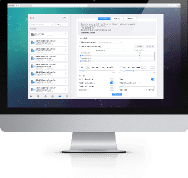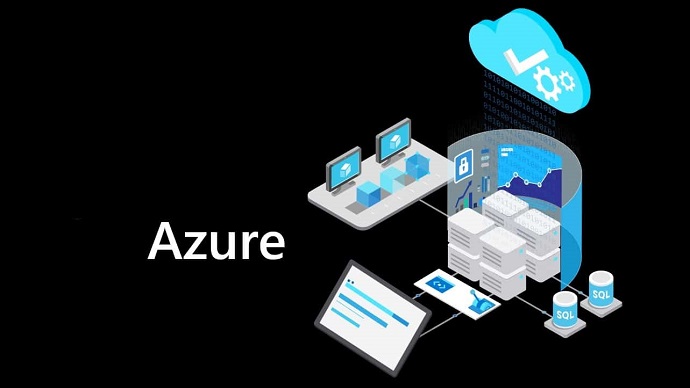Use VCE Exam Simulator to open VCE files

Scrum Master Certified Vmedu Practice Test Questions and Exam Dumps
Question No 1:
All of the following statements about Risk Communications are true, EXCEPT:
A. The Stakeholders should be continuously informed about risks, including the potential impact of these risks and the plans for responding to each risk.
B. The Scrum Team may also discuss specific risks related to their Tasks with the Product Owner during Daily Standup Meetings.
C. The Product Owner is responsible for the prioritization of risks and for communicating the prioritized list to the Scrum Team.
D. Information related to risks is maintained and updated through the Risk Burndown Chart.
Answer: C
Explanation:
In agile frameworks like Scrum, risk communication is an essential part of managing project uncertainties and ensuring that the team, stakeholders, and relevant parties are well-informed and aligned. The statements mentioned in the options address different aspects of risk communication, but one of them does not align with the Scrum roles and responsibilities correctly. Let's break down each option to understand why C is the exception:
A. The Stakeholders should be continuously informed about risks, including the potential impact of these risks and the plans for responding to each risk:
This statement is true. In Scrum, stakeholder engagement is a key principle. Stakeholders, such as customers, managers, or business representatives, should be regularly updated on risks, including their potential impact and mitigation strategies. This ensures transparency and helps stakeholders understand how risks might affect project timelines, scope, or quality. Communication regarding risks is often shared during sprint reviews, but the continuous communication throughout the project is essential.
B. The Scrum Team may also discuss specific risks related to their Tasks with the Product Owner during Daily Standup Meetings:
This is also true. The Daily Standup is a daily Scrum meeting where team members discuss their work, challenges, and progress. If specific risks arise that affect the work of the Scrum Team, they may raise those issues during this meeting. The Product Owner can provide guidance, feedback, or priority adjustments related to those risks, helping the team address the challenges they face.
C. The Product Owner is responsible for the prioritization of risks and for communicating the prioritized list to the Scrum Team:
This statement is incorrect in the context of Scrum. While the Product Owner plays a critical role in managing the product backlog, including prioritizing items based on business value, the responsibility for prioritizing risks is not solely theirs. Typically, risk management is a collaborative effort, involving the Scrum Team and the Scrum Master as well as the Product Owner. The Scrum Team should also contribute to identifying and addressing risks as they are most familiar with the technical aspects of the work. The Scrum Master helps create an environment where risks are actively discussed and managed. Therefore, it is not just the Product Owner’s responsibility to prioritize and communicate risks; it should be a shared responsibility.
D. Information related to risks is maintained and updated through the Risk Burndown Chart:
This is correct. A Risk Burndown Chart is a tool used to track and visualize risks in Scrum. It is similar to a burndown chart used for tracking remaining work but instead focuses on risk mitigation efforts. The chart helps monitor the status of risks and shows whether the team is making progress in addressing or mitigating those risks. This is a helpful tool for both the Scrum Team and stakeholders to see how risks are being managed over time.
The correct answer is C because in Scrum, risk management is not solely the responsibility of the Product Owner. The Scrum Team, including the Scrum Master, collaborates in identifying, prioritizing, and managing risks. Thus, the Product Owner is not the only person responsible for prioritizing risks and communicating them to the team.
Question No 2:
A town has begun a project that involves keeping track of the buses traveling on the roads of the town. Which of the following is NOT a characteristic of this project if it is managed according to Scrum Framework?
A. Detailed upfront planning will be done to ensure that risks are identified early on.
B. The team working on this project will meet every day for 15 minutes to list impediments to completing their tasks.
C. The Product Owner will prioritize the tasks that deliver maximum business value.
D. The customer does not have to be able to define very concrete requirements early on.
Answer: A
Explanation:
Scrum is an agile framework designed to handle complex projects, especially where requirements may evolve over time. It focuses on iterative progress, continuous feedback, and adaptability. Let’s analyze each option in the context of Scrum practices:
In Scrum, detailed upfront planning is not a primary characteristic. Scrum encourages adaptive planning, meaning that teams are expected to plan in iterations, with each sprint allowing for revisiting and adjusting plans based on the outcomes of previous sprints. While risks are managed throughout the project, Scrum does not typically require extensive upfront planning. This is more aligned with traditional waterfall methodologies that emphasize detailed planning at the beginning.
This answer is NOT a characteristic of Scrum because it contradicts the Scrum approach, which values flexibility and iterative learning over upfront exhaustive planning.
This is a core practice of Scrum. Scrum includes daily stand-up meetings (also called Daily Scrums) that typically last 15 minutes. In these meetings, the team members quickly discuss what they accomplished yesterday, what they plan to do today, and any impediments or obstacles they are facing. This daily meeting helps keep the team aligned and allows them to quickly address issues.
This is a characteristic of Scrum, and therefore, B is correct.
In Scrum, the Product Owner is responsible for maintaining and prioritizing the Product Backlog to ensure that the most valuable work is completed first. This allows the team to deliver the highest business value as early as possible. Prioritization is central to the role of the Product Owner.
This is indeed a key characteristic of Scrum, so C is correct.
Scrum recognizes that requirements can change and evolve as the project progresses. The Product Owner is responsible for clarifying and adjusting the requirements as the team works through the sprints. In fact, Scrum allows for flexible requirements that can be refined during the course of development, which aligns with the principle that the customer doesn’t need to have fully defined requirements from the start.
This is a characteristic of Scrum, as it embraces evolving requirements and the understanding that customers may not have fully concrete requirements at the outset.
The correct answer is A, as detailed upfront planning is not typical in Scrum. Instead, Scrum emphasizes adaptive planning, iterative progress, and flexibility throughout the project's lifecycle.
Question No 3:
The Chief Scrum Master facilitates the Scrum of Scrums Meeting. Which of the following statements about a Scrum of Scrums Meeting is true?
A. This meeting can be conducted at any time without any pre-determined intervals.
B. This meeting can be scaled up.
C. This meeting is always time-boxed.
D. This meeting is relevant only for high-investment projects.
Answer: C
Explanation:
The Scrum of Scrums (SoS) is a scaled agile practice that aims to address coordination issues in larger projects that involve multiple Scrum teams. As projects grow in size and complexity, communication between teams becomes crucial for maintaining alignment and ensuring that all teams are working toward a common goal. The Scrum of Scrums provides a forum for representatives from each Scrum team to discuss progress, dependencies, and obstacles. Let’s evaluate each of the options to understand why the correct answer is C.
The Scrum of Scrums is typically held at regular, pre-determined intervals, much like the daily Scrum within a single Scrum team. These intervals are set to ensure ongoing communication and coordination. Therefore, it is not conducted at random or without any set schedule. This option is incorrect.
The Scrum of Scrums is itself a scaled agile meeting designed to handle multiple teams working together on a large project. While it is true that it is used in large-scale projects, the meeting structure is not specifically designed to be "scaled up." Instead, it's intended to handle multiple teams at once, each of which is represented by a single person (usually the Scrum Master or a delegate) to provide updates. The goal is to ensure coordination and minimize duplication of effort. The meeting itself is already a scaled approach and is not inherently about scaling up. Therefore, this option is incorrect.
One of the core principles of Scrum is time-boxing, which refers to setting a maximum duration for each meeting to maintain focus and efficiency. The Scrum of Scrums is no different, and it is always time-boxed to ensure that it does not overrun and that the conversation remains relevant and concise. A typical Scrum of Scrums meeting is usually time-boxed to 15 to 30 minutes, depending on the number of teams involved. This is the correct answer because the Scrum of Scrums meeting is always time-boxed to maintain structure and efficiency.
While the Scrum of Scrums is particularly useful in large or complex projects that involve multiple teams, it is not exclusive to high-investment projects. Even projects of moderate complexity may benefit from the Scrum of Scrums meeting, especially if there are several Scrum teams that need to coordinate their efforts. The practice of a Scrum of Scrums can be applied broadly, not just to high-investment projects. Therefore, this option is incorrect.
The correct answer is C, as the Scrum of Scrums meeting is always time-boxed to ensure efficient communication between Scrum teams. This helps maintain the effectiveness of the meeting and ensures that it doesn’t overrun and cause unnecessary delays.
Question No 4:
The senior management of a multi-national company undertakes turnkey projects. To provide better value to customers, the senior management wants to implement Scrum in the organization.
Which of the following is NOT a Scrum principle that can be used as a selling point to illustrate the benefits of Scrum to customers?
A. Self-organization
B. Collaboration
C. Value-based Prioritization
D. Theoretical process control
Answer: D
Explanation:
Scrum is a popular framework for managing and completing complex projects, especially in environments where requirements are likely to change over time. It is grounded in several core principles that emphasize flexibility, communication, and iterative development. Let's review the principles mentioned in the options:
A. Self-organization: One of the key principles of Scrum is self-organization. Scrum teams are empowered to organize their own work, which fosters creativity, efficiency, and innovation. This principle encourages teams to take ownership of their tasks and find the best ways to accomplish them, contributing to faster decision-making and greater accountability. Self-organization is an important selling point for customers because it leads to higher motivation and productivity within teams.
B. Collaboration: Scrum promotes collaboration both within the team and with stakeholders. Teams work together closely, sharing knowledge and expertise, and frequent collaboration with customers ensures that the product being built is aligned with their needs. This principle helps in delivering better outcomes through continuous feedback and adjustments, making it a strong benefit to highlight when selling Scrum to customers.
C. Value-based Prioritization: In Scrum, the Product Owner works closely with stakeholders to prioritize features and tasks based on their business value. Value-based prioritization ensures that the team focuses on delivering the most important and impactful features first, providing customers with greater value sooner. This principle is a crucial part of Scrum’s appeal to customers, as it directly impacts how quickly they can see a return on their investment.
D. Theoretical process control: Theoretical process control is not one of the core Scrum principles. While Scrum does involve continuous improvement through iterative cycles and empirical data-driven decision-making, it does not specifically focus on "theoretical process control." This term is more aligned with control theory, which is not a central part of Scrum’s approach. Therefore, theoretical process control is not something that would typically be used as a selling point to customers.
In conclusion, the correct answer is D, as theoretical process control is not a Scrum principle and would not be an effective selling point to customers when implementing Scrum to provide better value.
Question No 5:
The Chief Scrum Master plays an important role during the Retrospect Project process. By being a part of the Retrospect Project Meeting, he/she provides valuable inputs mainly to identify, document, and internalize the lessons learned during the process.
What is an output of this process?
A Agreed Actionable Improvements
B Agreed Actionable Schedule
C Agreed Actionable Lessons
D Agreed Actionable Objectives
Correct Answer: A
Explanation:
The purpose of the Retrospect Project process (often referred to as the Sprint Retrospective in Scrum methodology) is to review the team's performance after completing a project or sprint, identify areas for improvement, and define actions that can be taken to enhance the team's effectiveness in future iterations. This is a critical process that encourages continuous improvement.
The primary output of this process is Agreed Actionable Improvements, which are specific, actionable changes or adjustments that the team commits to implementing in the next sprint or project phase. These improvements are directly related to lessons learned from the current iteration, with a focus on enhancing team processes, communication, and productivity.
Let's evaluate the other options:
B. Agreed Actionable Schedule: While a schedule may be part of project planning and execution, it is not the primary output of a retrospective. The retrospective is not about scheduling tasks but about reflecting on the team's performance and improving how they work together moving forward.
C. Agreed Actionable Lessons: While lessons are indeed learned during the retrospective, the goal is to turn these lessons into actionable improvements. The focus is not just on identifying lessons but on determining specific actions that can lead to better performance.
D. Agreed Actionable Objectives: Objectives are typically defined during the planning phase of a project, not during the retrospective. The retrospective focuses more on improvements and actions that can enhance team collaboration and performance, rather than establishing new objectives.
Conclusion: The correct answer is A. The output of the Retrospect Project process is the Agreed Actionable Improvements, which are tangible actions the team will take to improve future performance based on the lessons learned during the project or sprint.
Question No 6:
At the end of each Sprint the Scrumboard is _________.
A. Updated with new tasks and completed tasks.
B. Placed besides the new one to compare team velocities in Sprints.
C. Analyzed by the Scrum master to understand the project progress in that particular sprint.
D. Reset or wiped off.
Correct Answer: D
Explanation:
In the Scrum methodology, the Scrumboard serves as a visual representation of the work being done during a Sprint. It is typically divided into different columns to track the status of tasks, such as "To Do," "In Progress," and "Done." This board is a key tool for the team to visualize the progress of their work and facilitate collaboration. However, at the end of each Sprint, the board undergoes a reset or wipe-off process in preparation for the next Sprint.
While the Scrumboard is continuously updated during the Sprint with tasks as they are completed or moved across different columns, the board itself is reset at the end of the Sprint. This option is incorrect because the board is not updated with new tasks and completed tasks at the end of the Sprint; rather, it is cleared for the new Sprint.
This option suggests placing the old Scrumboard next to the new one for comparison purposes, which might be useful for some retrospective analyses, but it is not a standard practice at the end of a Sprint. The Scrumboard is not typically used to compare team velocities in this manner at the end of each Sprint. This makes Option B incorrect.
While the Scrum Master plays a role in overseeing the Sprint and facilitating team retrospectives, the analysis of progress based on the Scrumboard occurs during the Sprint Review and Retrospective meetings, not as a routine task at the end of every Sprint. This makes Option C an incorrect answer.
At the end of each Sprint, the Scrumboard is reset or wiped off to prepare for the next Sprint. This is standard Scrum practice because each Sprint represents a new cycle of work with different tasks and goals. The previous Sprint's tasks are reviewed during the Sprint Review and Retrospective, but the board itself is typically reset to ensure a fresh start for the next Sprint.
The correct answer is D—at the end of each Sprint, the Scrumboard is reset or wiped off to make room for new tasks and to prepare for the next cycle of work.
Question No 7:
Emily has taken on the role of Scrum Master on a new project. Training the team is one of her major responsibilities. As Scrum Master, which aspects will Emily need to address in this respect?
A. Gaps in technical knowledge in any of the team members.
B. Shortcomings in the Scrum Team's understanding of business value of features.
C. Increasing the team's capability to articulate their challenges to find solutions.
D. Lack of understanding of the Scrum processes and principles.
Answer: D
Explanation:
As a Scrum Master, Emily’s primary role is to guide the team in using Scrum processes effectively and ensuring the team adheres to Scrum principles. Let’s evaluate each aspect:
A. Gaps in technical knowledge in any of the team members.
While addressing technical knowledge gaps is important for team development, it is not the Scrum Master’s primary responsibility. Emily's role is to foster the team’s understanding of Scrum and ensure its smooth execution. Technical skills are usually handled by team members themselves or by the appropriate subject-matter experts in the organization. This is more of a team responsibility, and while Emily can facilitate learning, it is not a direct focus of her role.
B. Shortcomings in the Scrum Team's understanding of business value of features.
Understanding business value is important for Scrum teams, but it is typically the Product Owner’s responsibility to ensure the team understands business priorities and the value behind the features. The Scrum Master can facilitate communication between the Product Owner and the team, but directly addressing business value understanding is not primarily her task.
C. Increasing the team's capability to articulate their challenges to find solutions.
This is an important aspect of a Scrum Master’s role. Helping the team articulate their challenges and collaboratively find solutions is crucial for continuous improvement. A Scrum Master facilitates discussions and retrospectives to ensure that team members communicate openly, which helps identify areas for improvement and encourages self-organization.
D. Lack of understanding of the Scrum processes and principles.
This is one of the core responsibilities of a Scrum Master. Emily will need to address any misunderstandings or gaps in knowledge about Scrum processes, ceremonies, and principles. As a Scrum Master, she needs to ensure the team understands and follows the Scrum framework correctly. This is essential to the team's success, and Emily should focus on improving the team's comprehension of Scrum principles.
In conclusion, while aspects A, B, and C can be important in certain contexts, the core responsibility for Emily as a Scrum Master is to address D—ensuring the team has a clear understanding of Scrum processes and principles. Therefore, the best answer is D.
Question No 8:
To enable the Product Owner to successfully deploy the product release as a part of the Ship Deliverables process, the Scrum Master should ensure that:
A. The Scrum Team creates Deliverables as agreed upon
B. The Release Plan and Prioritized Product Backlog are updated
C. The Scrum Team creates the Release Planning Schedule
D. The Scrum team Accepts/Rejects the deliverables during Demonstrate and Validate Sprint process
Answer: B
Explanation:
In Scrum, the Product Owner is responsible for managing the Product Backlog and ensuring that the deliverables meet the necessary criteria for deployment. The Scrum Master plays a crucial role in helping the team adhere to Scrum practices and ensuring the processes are in place to allow for a successful product release.
Let’s break down each option:
A. The Scrum Team creates Deliverables as agreed upon:
While it is true that the Scrum Team is responsible for delivering the agreed-upon deliverables, this does not directly address enabling the Product Owner to successfully deploy the product. The team’s focus is on creating the increments, but this step alone doesn’t guarantee a smooth deployment process. This option is part of the overall picture but doesn’t directly influence the deployment readiness as part of the Ship Deliverables process.
B. The Release Plan and Prioritized Product Backlog are updated:
This is the most critical step in ensuring a successful product release. The Product Owner uses the Prioritized Product Backlog to decide what needs to be delivered next, and the Release Plan outlines the timing and order of features to be deployed. The Scrum Master must help the team keep these documents up-to-date to align with the current state of the project and ensure that the release is based on the most current and prioritized work. This facilitates the deployment process and aligns the team with the release goals, enabling the Product Owner to deploy the product successfully.
C. The Scrum Team creates the Release Planning Schedule:
While planning the release schedule is important, this isn’t directly the Scrum Team’s responsibility. The Product Owner is generally responsible for determining the release schedule based on the backlog priorities, with input from the Scrum Team. The Scrum Master’s role here is to ensure that the Scrum Team follows Scrum processes, but creating a release schedule is not specifically something the Scrum Master should ensure in this context.
D. The Scrum team Accepts/Rejects the deliverables during Demonstrate and Validate Sprint process:
This option refers to the Sprint Review, where the Product Owner validates the deliverables with the stakeholders. However, the Scrum Master’s role is not to ensure that the team accepts or rejects deliverables. The acceptance and rejection of deliverables is typically a Product Owner responsibility in collaboration with the team. The Scrum Master facilitates the process but doesn’t directly manage this activity. The key here is enabling the Product Owner to deploy the release, which involves ensuring the backlog and release plan are updated.
The correct answer is B, as updating the Release Plan and Prioritized Product Backlog is essential for enabling a successful deployment. The Scrum Master must ensure that these are maintained so the Product Owner can effectively manage the release process.
Question No 9:
Which method should be used to clearly identify the difference between an organization’s current capabilities and its desired future capabilities during the creation of the Project Vision by stakeholders and leadership?
A. Trial Project
B. JAD Session
C. Gap Analysis
D. SWOT Analysis
Answer: C
Explanation:
A Gap Analysis is the most effective method to evaluate the disparity between an organization's existing capabilities and the desired future state. When project stakeholders, including the Program Product Owner, Program Scrum Master, Chief Product Owner, and others, convene to develop the Project Vision, their goal is to clearly define what changes or improvements are necessary to move the organization from its current situation to its intended objectives.
Gap Analysis systematically compares the "as-is" state with the "to-be" state to determine the necessary actions, resources, and time required to close that gap. This enables better prioritization, goal-setting, and strategic planning—making it an ideal method for setting the foundation of a project’s direction.
In contrast:
Trial Project is more of a practical test of a solution or system, not a diagnostic or strategic planning tool.
JAD Sessions (Joint Application Development) are collaborative workshops for gathering requirements but don't focus on capability comparison.
SWOT Analysis is useful for understanding internal strengths/weaknesses and external opportunities/threats but doesn't directly map current to future capabilities.
Therefore, Gap Analysis is the most relevant and strategic approach to support the creation of a focused and actionable Project Vision.
Question No 10:
Collaboration within a team is an important principle of Scrum. All of the following activities constitute collaboration EXCEPT:
A. The Scrum Team decides which User Stories are important and assigns which Sprint they should be worked on.
B. The Scrum Team discusses the best approach to creating deliverables during a Sprint.
C. A Scrum Team member is facing difficulties in one of his tasks and another team member pitches in to help him.
D. The Scrum Team interacts with the Product Owner to obtain clarification on User Stories.
Correct Answer: A
Explanation:
In Scrum, collaboration is central and is reflected in the self-organizing nature of the team, open communication, and shared ownership of deliverables. Let’s break down each option:
This is not accurate Scrum behavior and thus does not reflect collaboration properly.
In Scrum, only the Product Owner is responsible for prioritizing the Product Backlog based on business value.
The Scrum Team selects which items to pull into the Sprint during Sprint Planning, based on the priority and team capacity—but they do not independently decide which stories are “important” or assign them to specific Sprints without Product Owner input.
Therefore, this is not a correct representation of collaboration, making it the correct answer to the question.
This is a textbook example of Scrum collaboration. Team members work together to decide how to deliver the items selected for the Sprint.
This reflects a core agile value: individuals helping one another and sharing responsibility for delivery.
Communication with the Product Owner to gain clarity is an essential part of collaborative development in Scrum.
Final Answer: A — Because it incorrectly suggests that the Scrum Team determines story priority and sprint assignment, which is the Product Owner’s role.

Top Training Courses











SPECIAL OFFER: GET 10% OFF
This is ONE TIME OFFER

A confirmation link will be sent to this email address to verify your login. *We value your privacy. We will not rent or sell your email address.
Download Free Demo of VCE Exam Simulator
Experience Avanset VCE Exam Simulator for yourself.
Simply submit your e-mail address below to get started with our interactive software demo of your free trial.